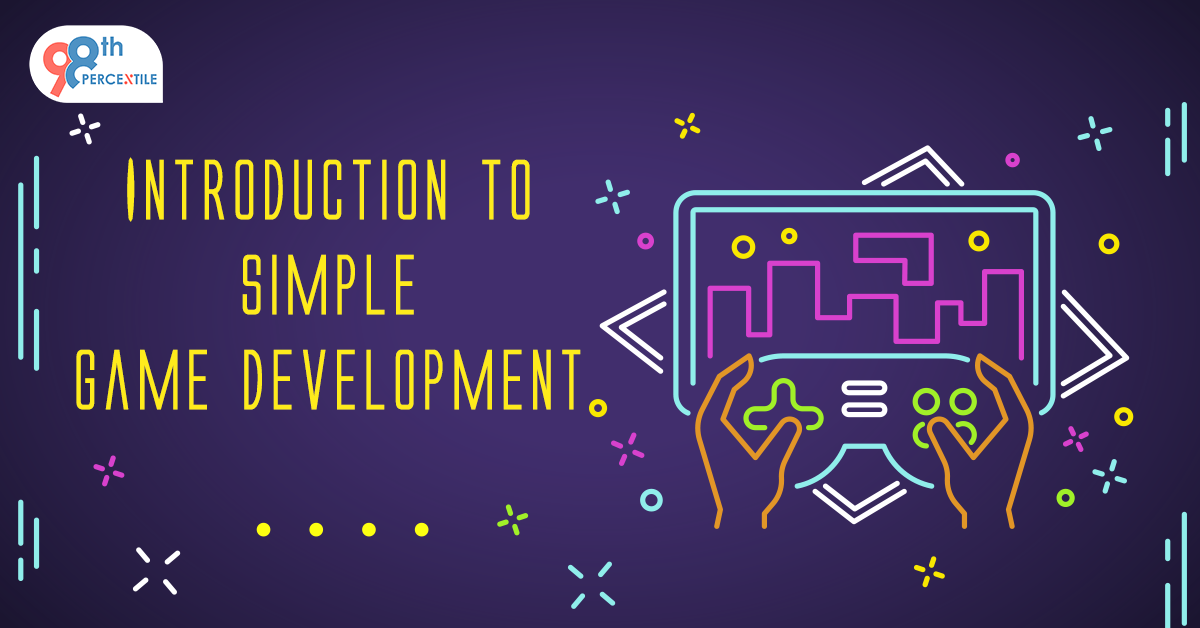In today's technology-driven world, kids are growing up with smartphones, tablets, and computers at their fingertips. While these devices are often seen as tools for entertainment and education, they can also be a gateway to an exciting and creative world: game development. Introducing children to game development not only taps into their natural affinity for technology but also nurtures their problem-solving skills, creativity, and logical thinking. In this blog, we'll explore why game development is a fantastic endeavor for kids and provide a step-by-step guide to get started.
Why Game Development for Kids?
Before delving into the intricacies of game development, it's essential to understand the motivation behind introducing kids to this field. One of the most critical factors is dopamine, a neurotransmitter in the brain associated with pleasure, reward, and motivation. When kids engage in enjoyable and rewarding activities, such as playing video games or creating their own, their brains release dopamine. Here's why dopamine is good for your child:
- Happiness: A healthy level of dopamine in your child's body is linked to feelings of happiness. Game development offers a creative outlet that can make kids feel fulfilled and content.
- Alertness: Dopamine helps keep your child alert and focused, a valuable skill for both gaming and schoolwork.
- Motivation: The satisfaction of creating something on their own can be a powerful motivator for children, driving them to explore and learn more.
The Game Development Process
Game development is a multidisciplinary field that combines aspects of computer science, design, art, and storytelling. It's about creating interactive, digital experiences where children get to be the creators. The process can be broken down into several key aspects:
Begin Your Child's Coding Adventure Now!
- Concept and Design: Game development often starts with a concept, story, or idea for a game. Developers create the game's mechanics, rules, characters, and world, keeping the target audience and user experience in mind.
- Programming and Coding: Developers write the code that brings the game to life. They use various programming languages and game engines to create gameplay, physics, and interactions within the game.
- Art and Graphics: Visual elements are crucial to a game's appeal. Artists and graphic designers create characters, environments, animations, and user interfaces that make the game visually engaging.
- Sound and Music: Sound designers and composers create audio elements, such as music, sound effects, and voiceovers, to immerse players in the game world.
- Testing and Quality Assurance: Game testers play a vital role in identifying and fixing bugs and issues, ensuring a smooth gaming experience.
- Iterative Development: Game development is often an iterative process. Developers create prototypes and refine the game based on user feedback and testing results.
- Publishing and Distribution: Once a game is complete, it needs to be published and distributed on various platforms, such as app stores, game consoles, or PC distribution platforms.
- Monetization: While optional, developers must consider how they will monetize their games, whether through one-time purchases, in-app purchases, ads, or other models.
- Community and Updates: Successful games often involve an active community of players. Developers release updates, patches, and expansions to keep players engaged and address their feedback.
- Marketing and Promotion: To reach a wider audience, developers promote their games through marketing strategies like social media, trailers, and press releases.
- Legal and Intellectual Property: Developers must be aware of legal aspects, such as copyright, licensing, and intellectual property rights, especially when using third-party assets or engines.
- Storytelling and Narrative: For narrative-driven games, writers and narrative designers craft the story and dialogues, adding depth and immersion to the gaming experience.
- Multiplayer and Networking: In the case of online or multiplayer games, developers create a networking infrastructure for player interactions and matchmaking.
Game Development Steps for Kids
Introducing kids under 14 to game development can be an exciting and educational journey. Here are steps to make the process engaging and fun:
Step 1: Understanding the Basics
Begin by explaining the basic concept of game development. Describe it as a way for kids to create interactive, digital adventures where they become the creators.
Step 2: Choosing a Game Development Platform
Select a beginner-friendly game development platform or software designed for kids, such as Scratch, which uses a block-based coding system, eliminating the need for complex coding syntax.
Step 3: Starting with Simple Projects
Encourage kids to start with small, simple game projects, like a character moving across the screen or a basic maze game. This helps build confidence and grasp the fundamentals.
Step 4: Learning the Basics of Game Design
Teach the importance of game design principles, such as creating engaging characters, a clear objective, and a user-friendly interface. Discuss concepts like goals, challenges, and rewards.
Step 5: Explaining Logic
Explain the logic of variables, types of variables, if-then statements, loops, and the different states of the game. These concepts are foundational for game development.
Step 6: Experimenting and Exploring
Encourage kids to experiment with different aspects of game development, such as creating sprites, sound effects, and music. This adds a creative dimension to their projects.
Step 7: Sharing and Collaborating
Show kids how to share their creations with friends and family and encourage collaboration with peers. They can learn a lot from each other and work together on projects.
Step 8: Staying Inspired
Expose kids to other games and game developers for inspiration. Discuss what makes their favorite games fun and engaging, sparking their creativity.
Step 9: Keeping It Fun Above All
Emphasize that game development is about having fun and being creative. There are no wrong answers in game development, and every mistake is an opportunity to learn something new.
Step 10: Encouraging Persistence
Teach kids that game development can be challenging at times, but the key is to keep trying and not get discouraged. Success comes with practice and patience.
Book 2-Week Coding Trial Classes Now!

 Students/Staff
Students/Staff Parents
Parents ElevatEd
ElevatEd














